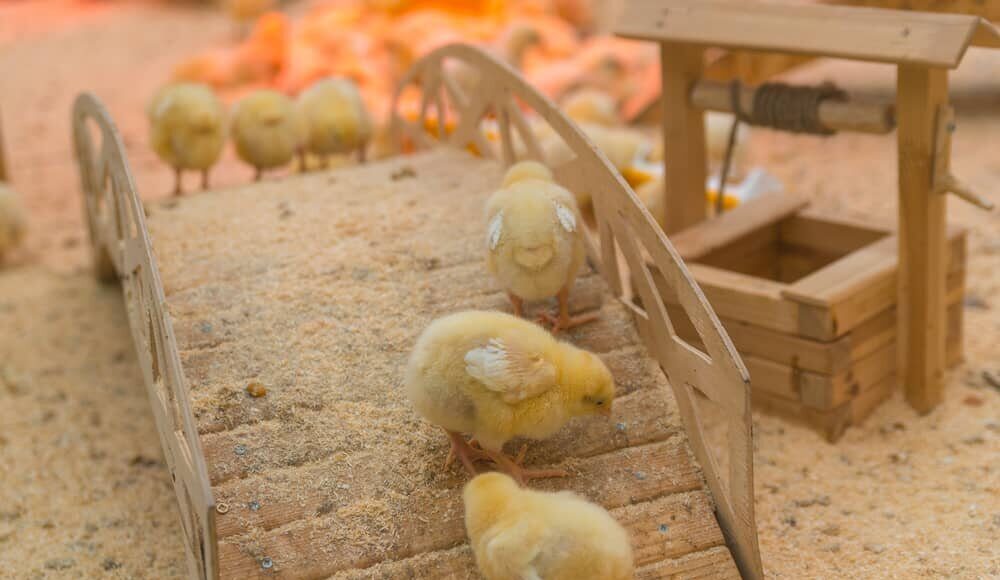Raising healthy and happy chicks is a rewarding experience that begins with providing the right environment. A chick brooder is essential for creating a safe and warm space for your chicks to thrive. This chick brooder week-by-week guide will help you navigate through the crucial first few weeks of your chicks’ lives, ensuring they grow into strong and healthy chickens.
In this guide, we’ll cover everything you need to know about setting up a brooder, maintaining the correct temperature, feeding, and more. With this week-by-week guide, you’ll be well-prepared to care for your chicks, whether you’re a first-time chicken owner or an experienced poultry enthusiast.

Setting Up Your Chick Brooder
Choosing the Right Brooder
Before your chicks arrive, it’s important to select the right brooder. The brooder should be spacious enough to allow your chicks to move around comfortably. You can use a large cardboard box, a plastic container, or purchase a commercial brooder. Ensure that the brooder has high enough walls to prevent chicks from escaping.
Temperature and Heating
Temperature is crucial in a chick brooder. During the first week, maintain a temperature of 95F (35C). Decrease the temperature by 5F each week until it reaches 70F (21C). Use a heat lamp with a red bulb to provide warmth, and monitor the temperature with a thermometer.
Week 1: The First Days
Settling In
As you bring your chicks home, ensure they have access to food and water immediately. Dip their beaks in water to teach them how to drink. Provide chick starter feed, which is high in protein, to support rapid growth.
Monitoring Health
Keep a close eye on your chicks for any signs of illness. Healthy chicks are active and alert. If you notice any lethargy or abnormalities, consult a veterinarian. It’s important to check their droppings for any signs of diarrhea, which could indicate coccidiosis.
Week 2-3: Growth and Development
Adjusting the Environment
As your chicks grow, gradually increase the size of the brooder or move them to a larger space. Ensure they have enough room to explore and exercise. Replace the bedding regularly to maintain cleanliness. Learn more about changing brooder bedding.
Introducing Safe Toys
Chicks are curious creatures that enjoy exploring. Introduce safe toys to keep them entertained and encourage natural behaviors. Consider adding branches, mirrors, or small balls. Discover more about safe toys for chicks.
Week 4-5: Feathering Out
Transitioning to Grower Feed
As chicks feather out, switch to grower feed, which provides balanced nutrition for developing birds. Continue to provide fresh water and monitor their health.
Eco-Friendly Practices
Consider using eco-friendly bedding options to reduce waste. Options like shredded newspaper or straw can be effective and sustainable. Explore more about eco-friendly options.
Week 6-8: Preparing for the Outdoors
Gradual Introduction to the Coop
As your chicks grow, start introducing them to their future coop. Allow short supervised visits to help them acclimate to the new environment. Ensure the coop is predator-proof and provides adequate shelter.
Maintaining Hygiene
Keep the brooder clean to prevent disease. Use paper towels to line the brooder for easy cleanup. Learn more about using paper towels in brooders.
Week 9 and Beyond: Growing Into Chickens
Fully Integrated into the Coop
By week 9, your chicks should be fully integrated into the coop with adult chickens. Continue monitoring their health and behavior as they adjust to their new home.
Long-Term Health Monitoring
Regularly check for signs of illness or injury. Providing a balanced diet and clean water will help keep your chickens healthy and thriving.

FAQ Section
What is the ideal temperature for a chick brooder?
During the first week, maintain a temperature of 95F (35C). Decrease the temperature by 5F each week until it reaches 70F (21C).
When can chicks be moved to the coop?
Chicks can be moved to the coop around week 6-8, once they are fully feathered and can regulate their body temperature.
What should I feed my chicks?
Start with chick starter feed, then transition to grower feed around week 4-5.
For more detailed information on caring for chicks, visit UNH Extension.
This article contains affiliate links. We may earn a commission at no extra cost to you.











